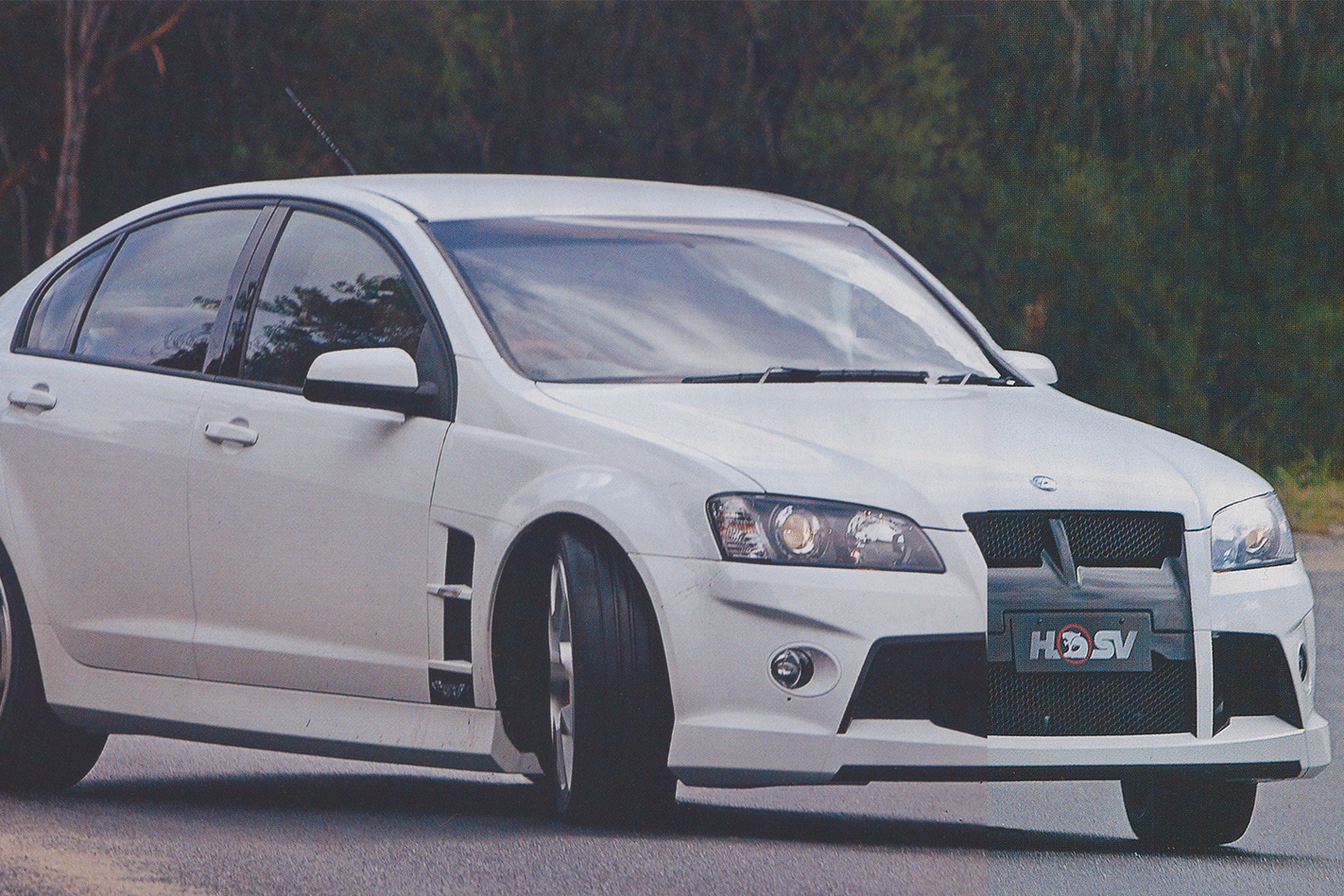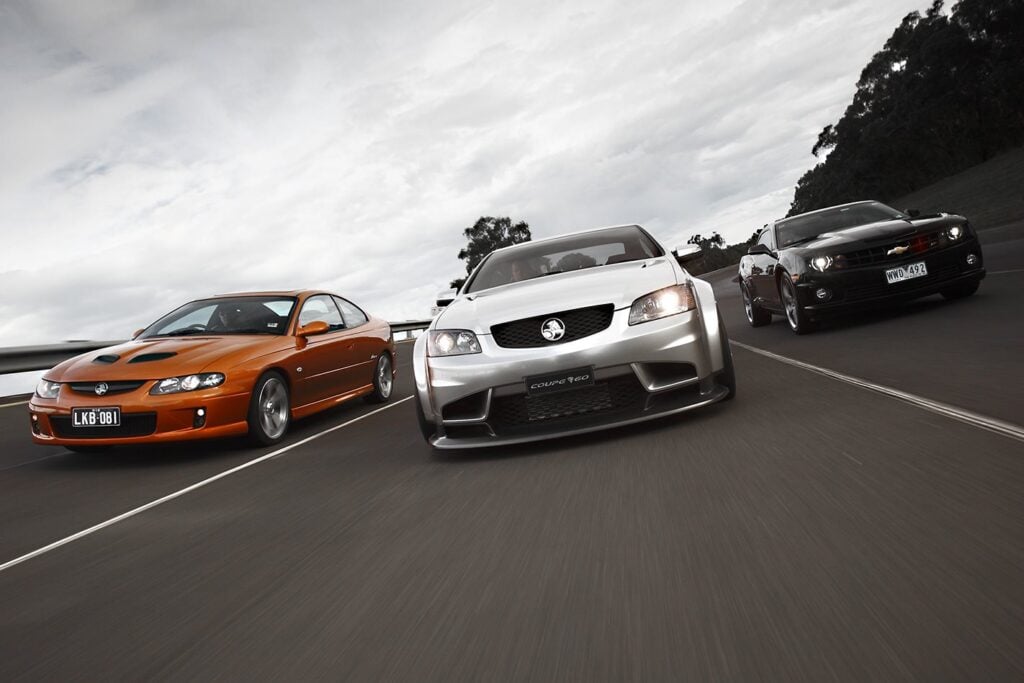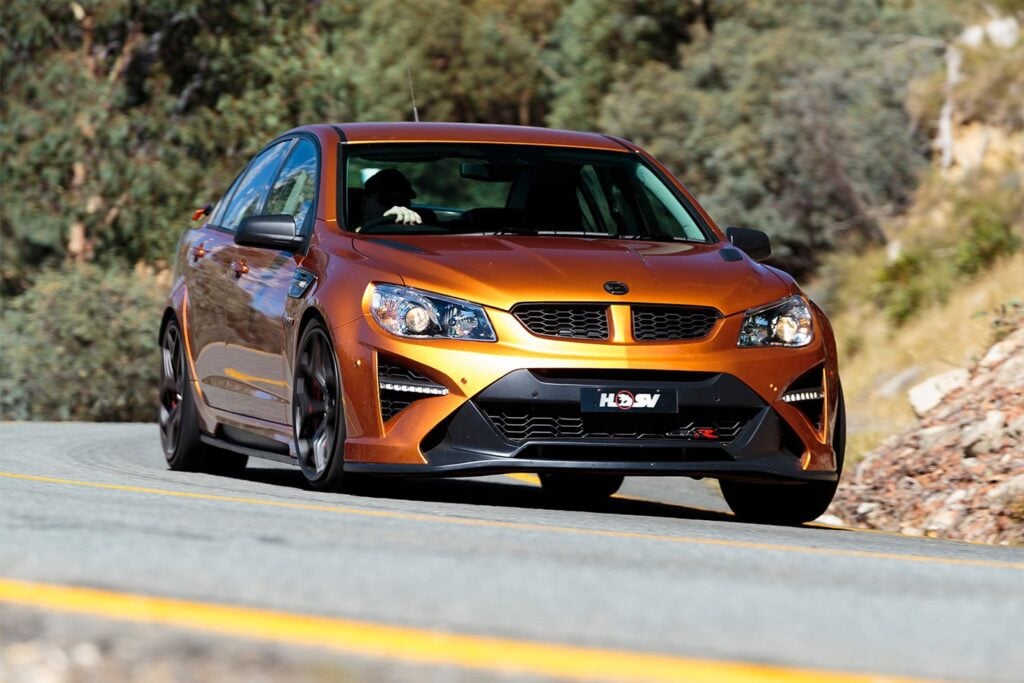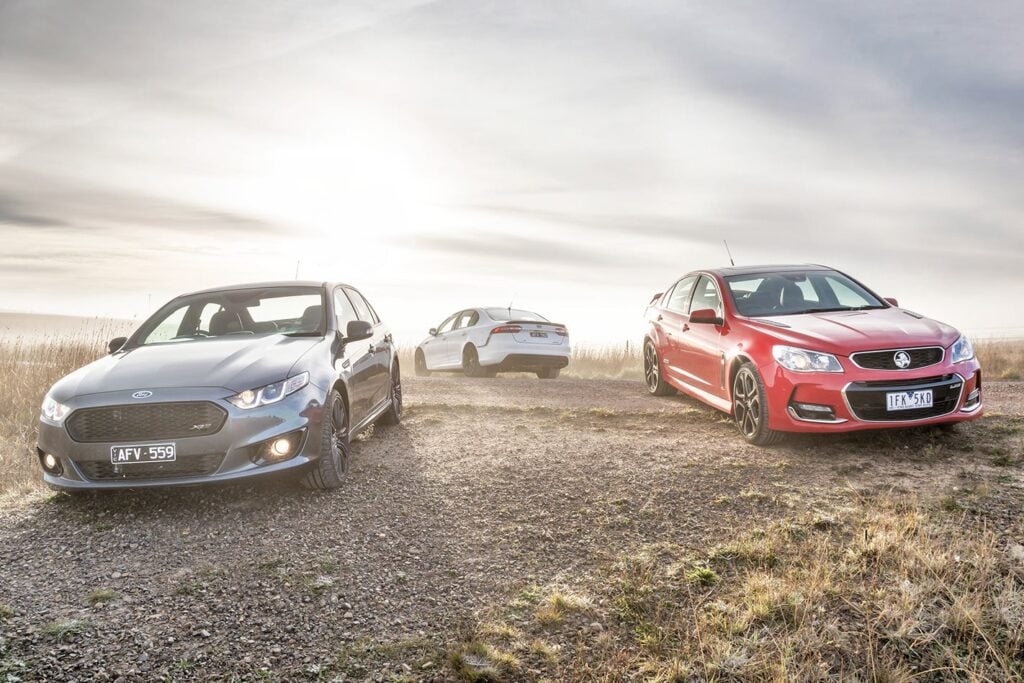THE DAY is way too cold for sweaty palms, but I have a swarm of butterflies doing back-flips in my guts as I turn the key of the hulking white W427.
I’m about to become the first non-GM employee to drive it. Anticipation is balanced by fear, because wind and rain are sweeping off Bass Strait across Holden’s Lang Lang Proving Ground. The drying track is wet again, the tarmac is edged by grass and mud and I have 375kW and 640Nm of bellowing 7.0-litre V8 ready to set the rear wheels alight.
- 375kW 640Nm
- 0-100 4.7sec
- 7.0-litre V8
- $155,000
- W427
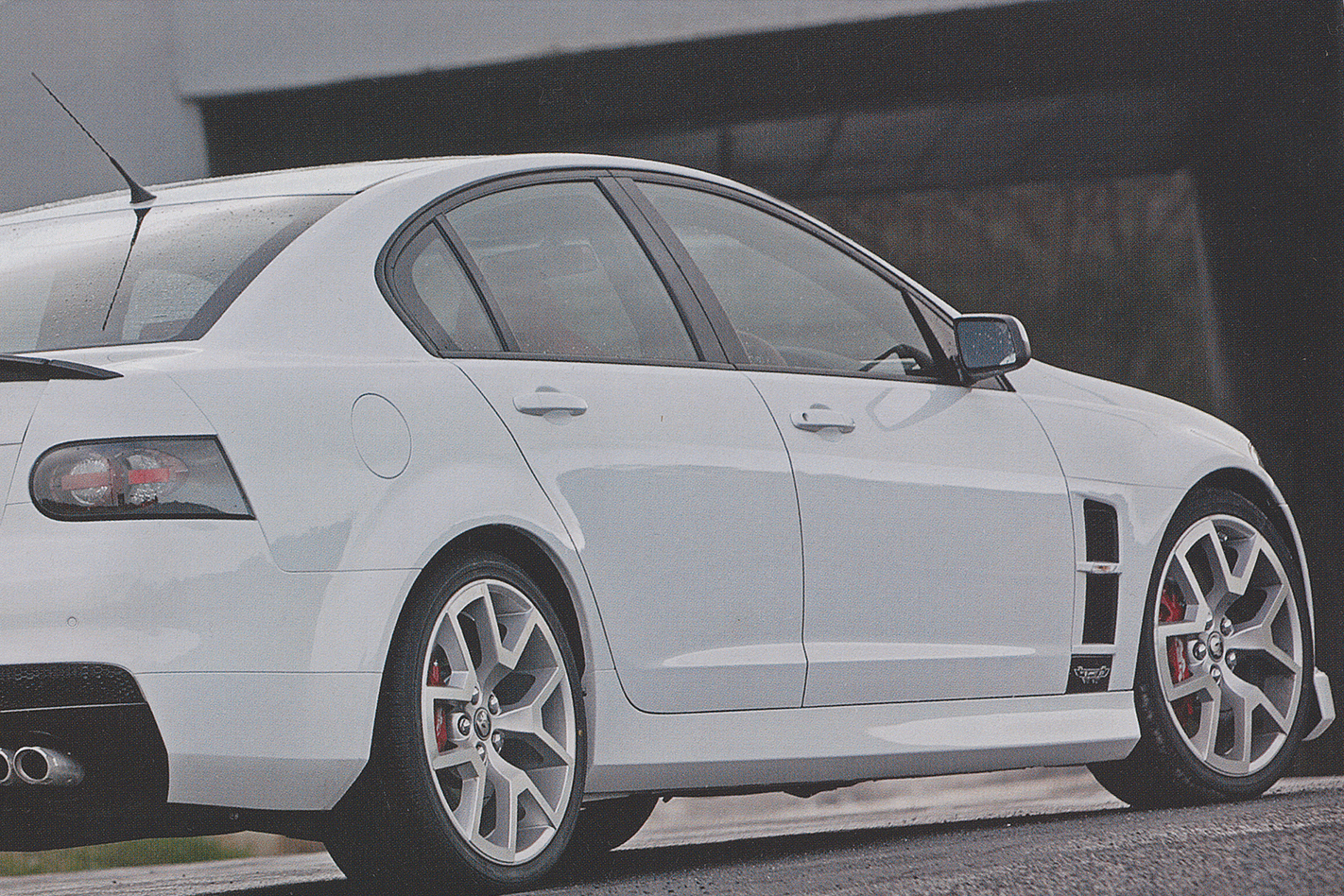
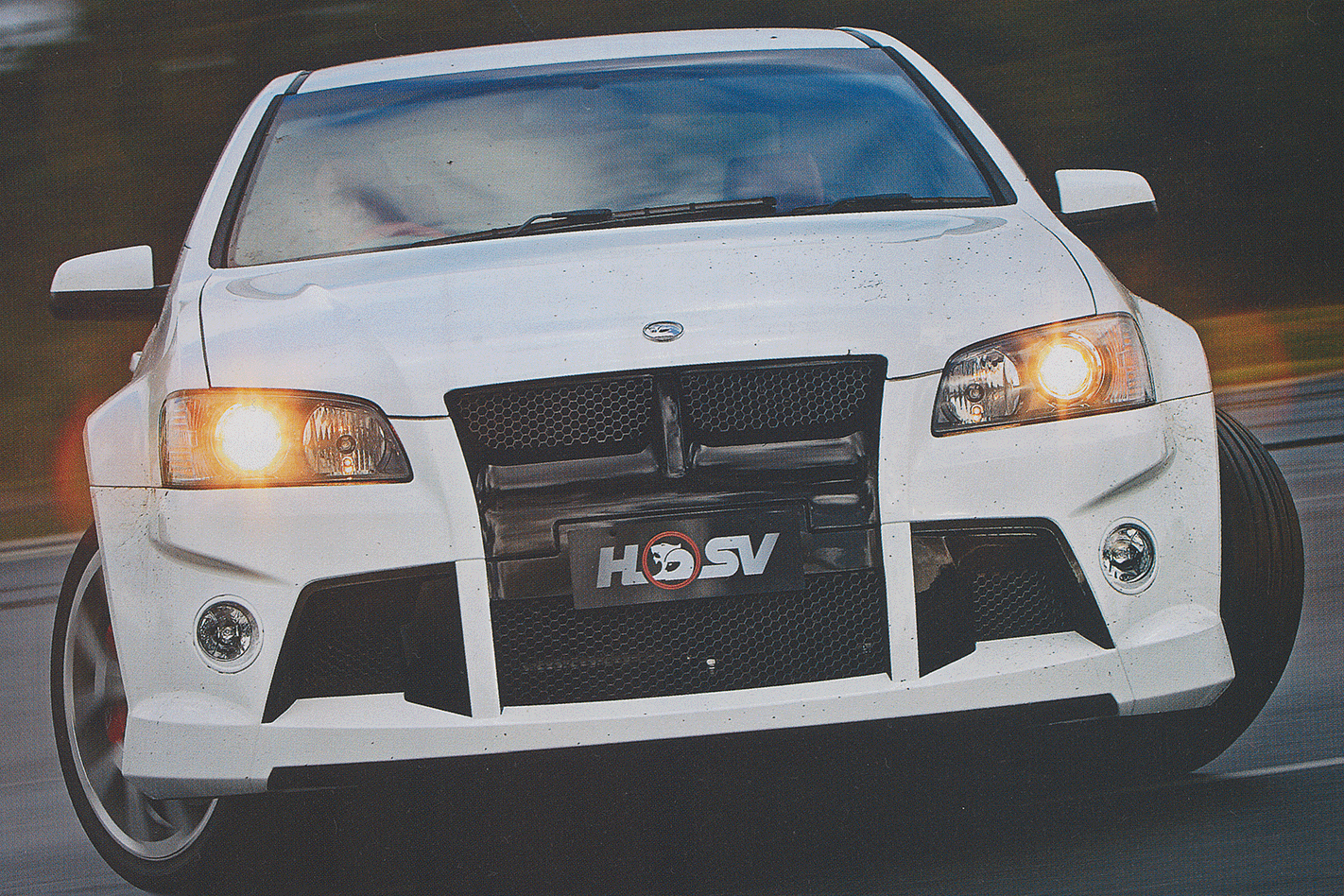
Well, no. Far from being just a heart transplant, the W427 program mushroomed into a full-blown development project that goes some way towards explaining the car’s $155,500 price tag. While customers dream about power and performance, they also want reliability and, being an HSV, the W427 had to carry a three-year and 100,000km warranty. There could be no short cuts: this car had to go like a V8 Supercar and hang together like a Camry.
In hardware terms, that meant the GM 6L80 six-speed auto used in other HSVs was out due to the project’s torque output of well over 600Nm. Even the usual manual transmission wasn’t deemed up to the job, so the engineering team (now led by Joel Stoddart after John Clark’s departure to Elfin) chose GM’s stronger TR6060 six-speed manual as used in the Corvette and also destined for the Commodore-based Pontiac G8. The clutch is a GM Powertrain LS7 unit with a new actuator to reduce pedal loads, and the differential has had parts shot-peened and lapped by hand.
Funnily enough, fitting the larger capacity engine into the VE’s engine bay was relatively easy. With the same external dimensions as the 6.2-litre LS3 and slightly less overall height due to the dry sump employed on the LS7, it slots straight in. But then there were the ancillaries, including the 10-litre oil reservoir for the dry sump, which is a tall, alloy tank full of internal baffling that sits front and left in the engine bay, where the air induction system used to be. The new cold air induction comes over the top of the radiator (which has been reclined slightly to fit) and forms the shortest possible path to air cleaner and, ultimately, the engine’s top end.
The exhaust has ceramic-coated, four-into-one extractors to replace the Corvette Z06’s more compact cast units, which then feed into three-inch and then 2.75-inch dual pipes, compared with the Clubsport and GTS’s 2.25-inch system. The rear mufflers are described as ‘active bi-modal’, with vacuum-operated valves to re-route high-speed gasses to better manage gas flow. And, yes, to deliver an especially blood-curdling V8 roar on full throttle while still passing drive-by noise regulations.
That’s far from the end of the engineering story, however. The chassis and associated systems needed an upgrade commensurate with the envisaged speed potential. So the front brakes are all new, with 380mm diameter, fully floating, two-piece rotors and six-piston calipers that give a 50 percent higher operational area for the high-friction pads. The 20-inch rims are unique and not just for cosmetic reasons; their outward bulge may not be kerb friendly, but it’s necessary to clear the new calipers.
The suspension has been totally revised, with spring rates up 30 percent compared with the GTS and the bushes in the rear that have been stiffened to reduce lateral wobble on turn-in and power-down. The adjustable magnetic dampers have been recalibrated – part of an ongoing development process by HSV as they explore the programmable potential of Magnetic Ride Control (MRC) – to suit the new suspension settings that includes a 20mm lower ride height.
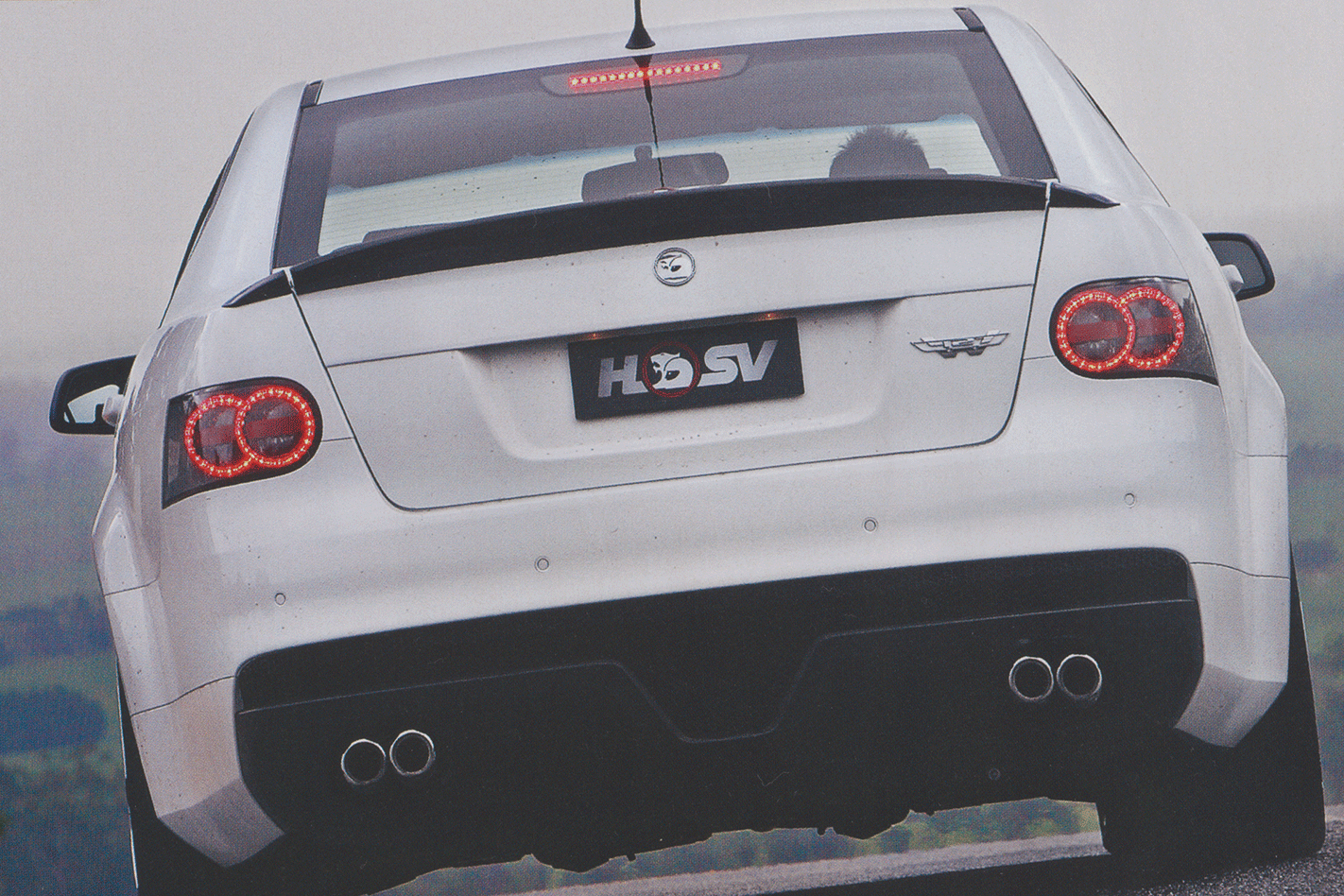
For such a big capacity engine, it loves to rev. Almost unbelievably, it keeps on producing oceans of horsepower as it scales the tachometer. Where the LS3 (and the LS2 before it) are running well out of puff by the 6000rpm mark, the W427 is finding extra lung capacity and surging hard towards the next upshift with a gruff yet voluble exhaust bellow that would do Garth Tander’s race mount proud. Exiting Lang Lang’s high-speed series of esses onto the ride and handling circuit’s back straight (on my way to that slippery, high-speed left hander) I see 180km/h before popping fourth and dabbing the brakes. Few cars can gather speed like that.
Traction is obviously a problem, whether it’s during standing start acceleration or exiting a corner on anything other than the grippiest of surfaces. HSV has retained the Bridgestone Potenza 275/30R20 rear tyres used on the GTS, and it’s all too easy to light them up from standstill with more than 2000rpm on the tacho, or when grabbing second or even third for that matter. So while it takes about 1.4 seconds to hit 30kmlh, the next 70kmlh (including shift time) arrive in just another 3.3 seconds. Onwards, and pace gathers relentlessly until the 400 metre line is crossed in 12.8 seconds, at 184km/h.
Despite the obvious tendency for the tail to go wide under power, there’s surprising balance and delicacy to the handling. The peripherals that come with the bigger engine only add about 10kg to the front of the car and overall weight is only 29kg more than the 1845kg GTS, yet the suspension mods seems to have worked. The W427 turns in without a trace of understeer, inviting an early throttle application, and then it’s up to the driver’s right foot to dictate just how far the tail swings around. Certainly, the stiffer rear bushes negate any body movement so the response to power-down is quick and relatively predictable.
It’s probably worth noting, too, that the ESP has been recalibrated and allows a fair degree of slip angle before bringing things evenly into line. So there’s fun to be had without switching off the electronics and that’s a very good thing: too much enthusiasm and not enough skill in this car could spell big trouble.
Countering the W427’s more bestial tendencies are better than acceptable levels of refinement. The clutch pedal is light, even if the take-up is a little sharp, but then with all that torque it takes a certain amount of ham-fistedness to actually stall. The engine is quiet enough on light throttle openings with no aggravating drone or boom, and the ride is surprisingly supple with the MRC set to normal mode, and significantly firmer, yet not harsh, on the ‘track’ setting.
I managed to wrong-slot the six-speed a couple of times, grabbing fifth instead of third (and thankfully not the other way round) but with a concession to how busy I was at the time, I’d guess that anyone who can drive a manual would have no problems with this car in the majority of driving. And there’s even better rearward visibility than a GTS, past the smaller rear spoiler.
But really, it’s difficult not to prod the W427 into its dominant personality trait, which is all Mr Hyde. If guts and thunder are what you’re after then nothing comes close to the sheer performance spread, noise and attitude, all arriving with four-door liveability. The danger is that, with prices of old Aussie muscle cars currently through the roof, collectors will buy this car and store it. Drivers, though, will go out and have the time of their lives.

